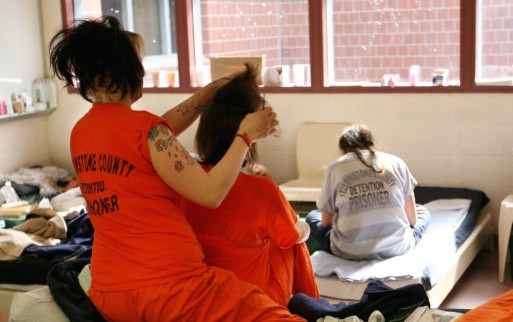Women in Canadian prisons should be assessed for previous trauma such as physical and sexual abuse and connected with treatment resources when they’re released, a medical sociologist says.
The need is especially great for aboriginal woman who are “grossly over-represented” in the prison population, said Dr. Flora Matheson, a medical sociologist and research scientist with the Centre for Research on Inner City Health of St. Michael’s Hospital.
There are no statistics on the prevalence of trauma in Canadian prisons, but U.S.-based studies have estimated that childhood physical and sexual abuse by caregivers ranges from a low of 25 per cent up to 90 per cent among women in prisons. Revictimization as adolescents and adults is common and there are high rates of intimate partner violence.
Canadian prisons offer substance abuse programs for female offenders. But with a primary mandate to ensure public safety and penalize offenders, trauma screening and treatment have not been a priority nationally or internationally, Dr. Matheson wrote in a paper published today in the journal Women and Criminal Justice. Trauma can translate into serious health and social consequences, including physical and mental illness, substance abuse, unemployment and low education attainment.
Dr. Matheson said that for aboriginal women, in addition to their own personal experiences with trauma, their parents, siblings and friends may also have deep experiences with trauma. Many aboriginal communities have been devastated by the impact of trauma, she said, with high rates of addictions and suicides. While aboriginal women make up 3.8 per cent of the Canadian population, they represent 41 per cent of the sentenced prison population.
Dr. Matheson said the first step would be to screen for trauma when women are admitted and released, so prisons know the extent of the issue that needs to be dealt with during incarceration or can refer women to community resources at the end of their sentence.
“Then trauma-specific services can be implemented, enabling women to link their traumatic life histories, familial dysfunction, substance abuse, mental health issues and criminality together so as to gain an understanding of their triggers, behaviours and cognitions,” Dr. Matheson said.
Dr. Matheson noted that one of the challenges in offering trauma treatment in prison is that prisoners have to return to their cells within the general population after counseling sessions, yet they may be in a highly emotionally vulnerable state.
“They’re still trying to deal with the emotions when they have to go back to a general prison population and pretend that everything’s OK.”
Dr. Matheson’s paper is based on face-to-face interviews with 31 female offenders in Canada.
Agencies/Canadajournal
 Canada Journal – News of the World Articles and videos to bring you the biggest Canadian news stories from across the country every day
Canada Journal – News of the World Articles and videos to bring you the biggest Canadian news stories from across the country every day



